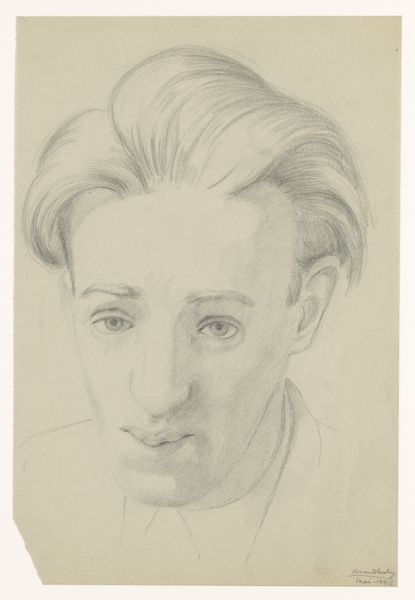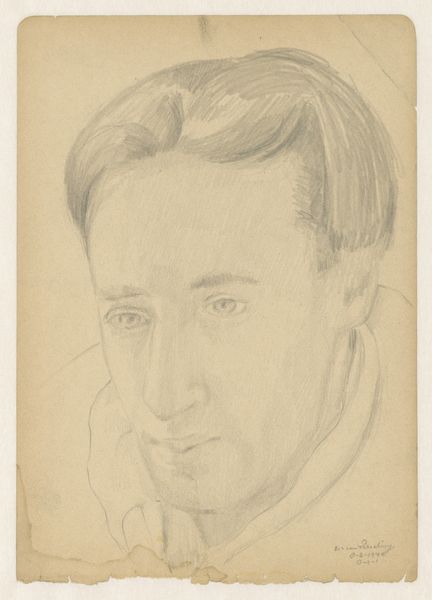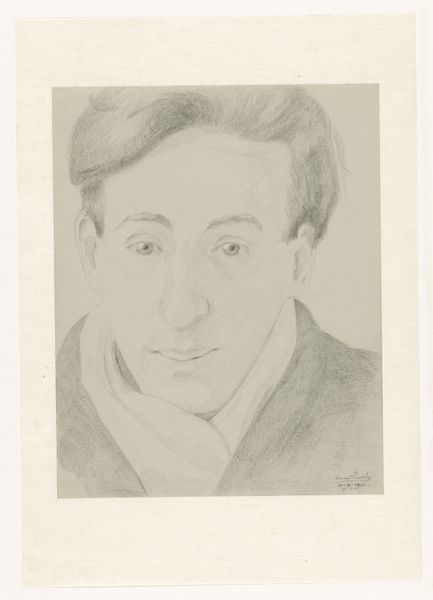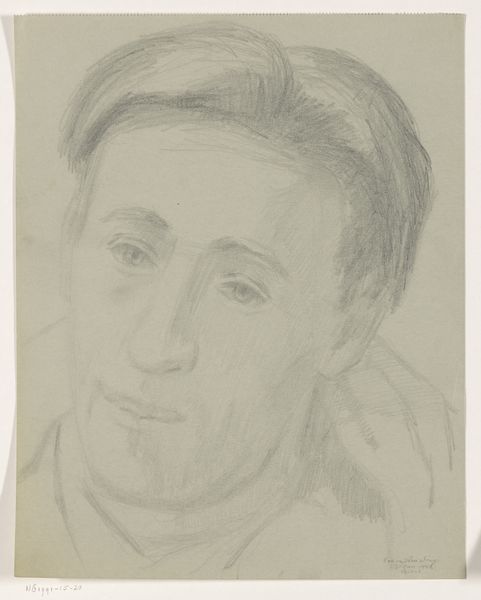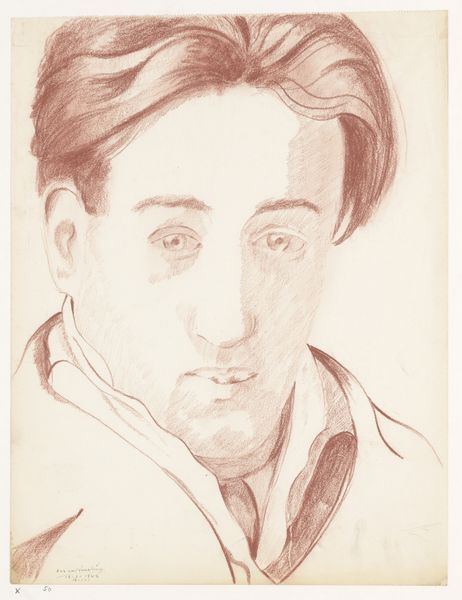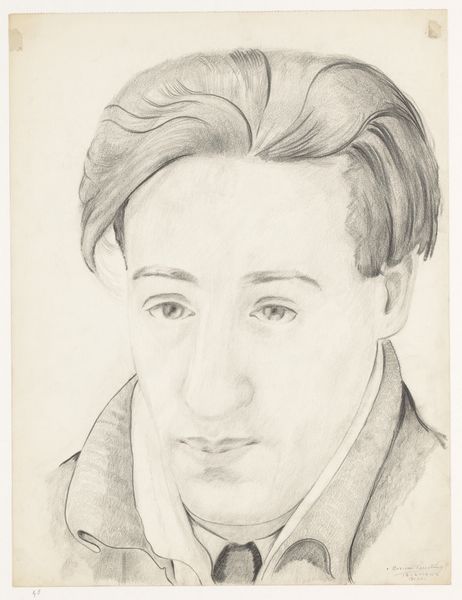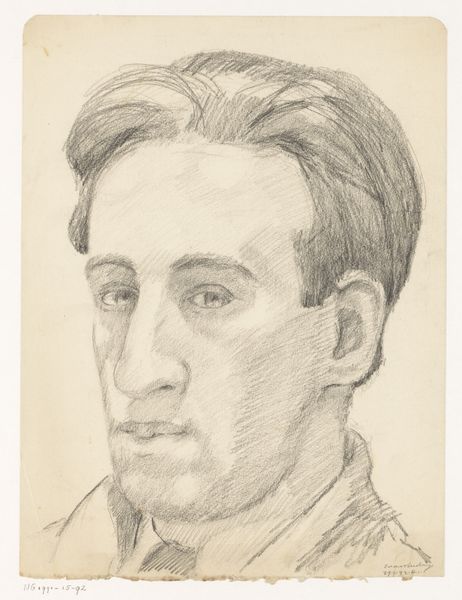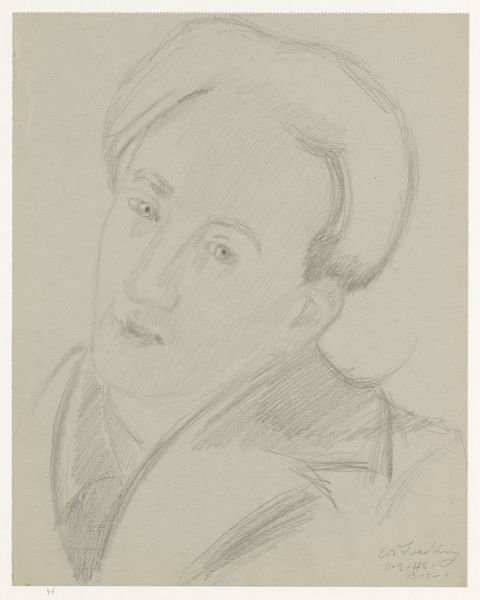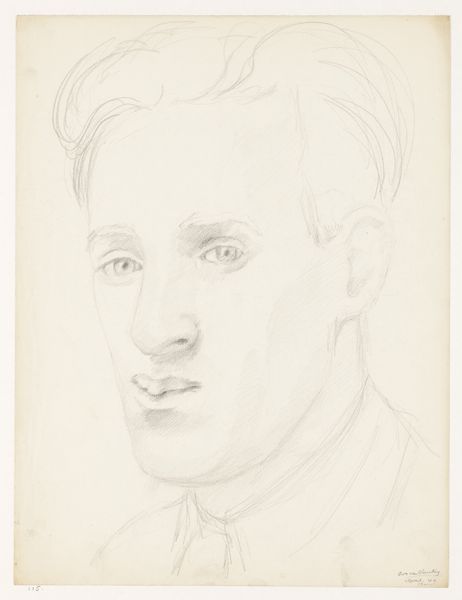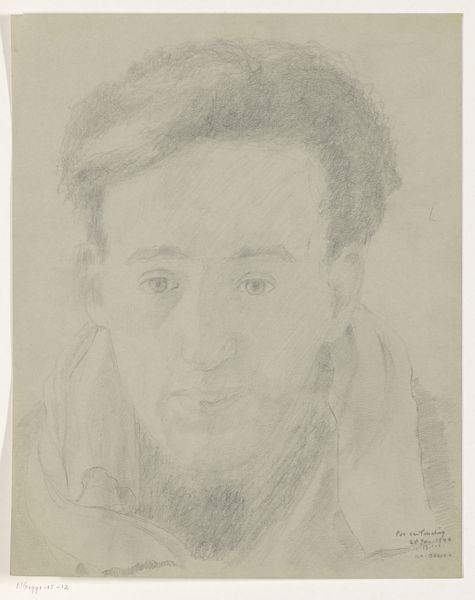
drawing, pencil, graphite
#
portrait
#
pencil drawn
#
drawing
#
self-portrait
#
pencil sketch
#
figuration
#
pencil drawing
#
pencil
#
graphite
#
sketchbook drawing
#
portrait drawing
#
modernism
Dimensions: height 32.0 cm, width 24.0 cm
Copyright: Rijks Museum: Open Domain
Curator: Here we have a graphite pencil drawing by Cor van Teeseling. Its title is "Self-portrait, bent forward and face on: B-1-1" and it’s dated to somewhere between 1941 and 1948. What's your initial reaction? Editor: Somber. Definitely a study in melancholy. The averted gaze and hunched posture suggest introspection, or perhaps weariness. The shading around the eyes adds to that sense of quiet suffering. Curator: Yes, and the date is interesting. This was a tumultuous time in Dutch history. Self-portraits became quite significant, allowing artists to explore individual identity amidst collective trauma. The medium itself, humble graphite, speaks volumes about accessibility and perhaps constraint during the occupation. Editor: That's a fascinating point. Looking at the composition, the artist's lowered head, slightly out of the frame—was this perhaps an attempt to reflect psychological unease through spatial distortion? Curator: I think that’s plausible. Moreover, there is a slight blurring of features, and some disproportion, which deviates from a realistic representation of his physiognomy. I would venture that this choice reflects the interior emotional state. Editor: So, we're reading not just a likeness but a symbolic representation of inner turmoil. Were there any prevailing artistic movements at the time influencing van Teeseling’s self-presentation? Curator: Modernism, as an aesthetic, promoted exactly that - exploration of emotional or mental states over rigid visual fidelity. In line with this trend, van Teeseling's portrait moves beyond simple physical depiction, tapping into a deeper psychological resonance. It reflects that collective mood of that era, doesn’t it? Editor: It really does. It's a poignant reminder that art can be both deeply personal and a reflection of broader historical anxieties. Thank you for elucidating this for me. Curator: My pleasure. Hopefully, the artwork opens more discussions that will keep on inspiring us.
Comments
No comments
Be the first to comment and join the conversation on the ultimate creative platform.
